NORTH WALES COAST RAILWAY:NOTICE BOARD
Rheilffordd arfordir gogledd Cymru: Hysbysfwrdd
23 June 2018
Share on Twitter
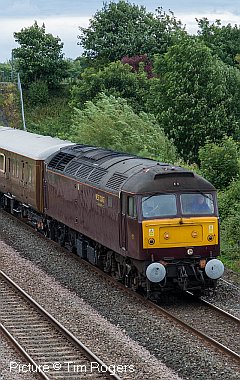
Tweets by @NWrail1
Contributions and comments are encouraged: see the Contributions Page
June 2018
30 June and 1 July Llangollen Railway Classic Transport Weekend
July 2018
7-8 July North Wales N Gauge Model Railway Show, Conwy. With 12+ layouts on show with trade support and second-hand sales. Refreshments available and full disabled access. Saturday 10:00 - 17:00, Sunday 10:00 - 16:00. Adults £4, Children £2. Ysgol Porth y Felin, Llanrwst Road, Conwy LL32 8FZ
Sunday 22 July Steam on the Coast Railway Touring Company North Wales Coast Express
Liverpool - Chester - Llandudno Junction - Holyhead and return. 45690
Tuesday 24 July Steam on the Coast Railway Touring Company Welsh Mountaineer Preston - Blaenau Ffestiniog. 45699 or 48151: Preston - Chester - Llandudno Junction - Blaenau and return
August 2018
Saturday 4 August. Steam on the Coast. Saphos Trains. Bangor (07.00/22.15) Llandudno Jct (07.25/21.55) Colwyn Bay (07.35/21.45) Rhyl (07.50/21.30) Prestatyn (08.00/21.20) Flint (08.10/21.10) Chester (08.30/20.50) Crewe (09.30/20.00) Stafford to Stratford-on Avon. 46100, 34046 or 70000.
September 2018
Saturday 8 September Steam at Chester
29 September Llangollen Railway Diesel gala
October 2018
12-14 October Llangollen Railway Autumn Steam gala
Friday 19 October Steam on the Coast Golden Eagle Luxury Tour (Day 5 of 12) (Provisional) Chester - Blaenau Ffestiniog 46100: Llandudno Junction - Blaenau Ffestiniog, Holyhead - Crewe
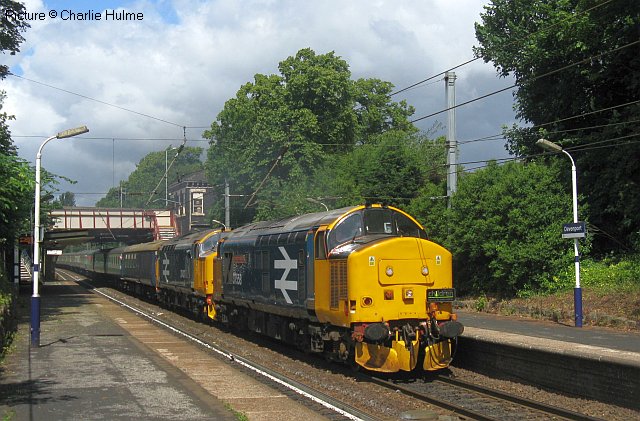
The 'Nosey Peaker' of 14 June was a railtour organised by the Branch Line Society to raise money for the Railway Children charity. DRS provided three Class 37/4 locos, all in classic large-logo livery. The route included the Stockport - Buxton ex-LNWR route; passing our home station at Davenport 37 558 Vulcan XH558 (a.k.a. 37 427) and 37 407 were leading, with 37 401 Mary Queen of Scots on the rear, having announced their approach with that Class 37 engine roar at it climbed the 1 in 99 climb, a taste of what was to come with the 1 in 60 / 1 in 58 banks beyond Whaley Bridge.
After the tour, the coaches went on to form the Three Peaks Challenge train (see below and last issue).
This is an pictorial extra issue. The next update will be on the evening of Tuesday 26th. - Charlie
Looking back: North Wales 1981, Part 2 - with Barrie Hughes
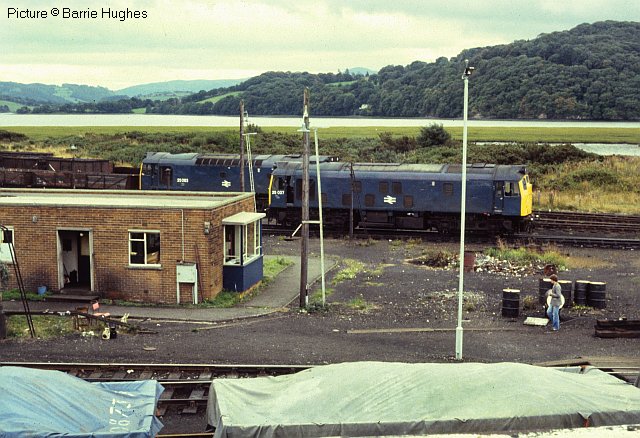
Continuing my visit to North Wales, to attend the Llandudno Liberal Party conference, on 15 September 1981 (above) 25 083 and 25 027 stand in the yard at Llandudno junction depot. 25 083 was withdrawn on 1 July 1984 then made it into preservation. It languished for a time at Crewe before being taken to the Caledonian Railway Centre at Brechin. The loco had worked in Scotland for a while and was involved in the fatal crash near Invergowrie en route to Dundee when 47 208 ran into the back of the failed passenger train having passed a badly maintained semaphore signal. See the Derby Sulzers website for full details. 25 027 was withdrawn on 8 May 1983 and cut up at Vic Berry’s scrapyard Leicester in September 1987.
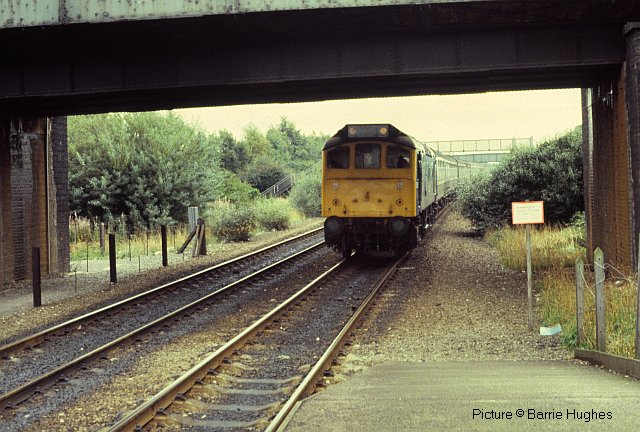
On 16/9/81 an unidentified Class 25 arrives at Shotton Low Level on a stopping train to Bangor under the Borders Line to Bidston. The wooden platforms are built on the former slow lines. On the left on the former Up Slow line is a footpath that provides access to and from the British Steel Corporation Shotton steelworks.
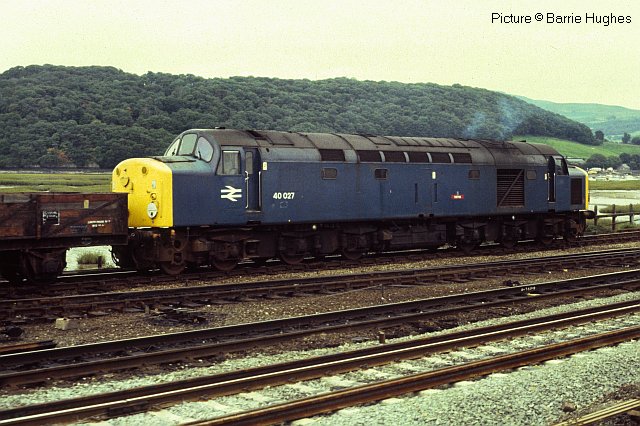
40 027 with the painted-on name Parthia stands on a freight in Llandudno Junction Yard. Nameplates had been removed in the final years for fear they would be stolen by enthusiasts. This was possibly the Mostyn - Amlwch sulphur freight. General merchandise could not be handled at Holyhead which was essentially a container/ferry port, so the Sulphur came in to Mostyn Dock where there were about 7 consignments a year. The sulphur wagons needed to be turned around quickly and were stored at Mostyn Up Yard, just north of the signal box when not in use. The loco was withdrawn on 24 April 1983 and scrapped at Crewe a year later.
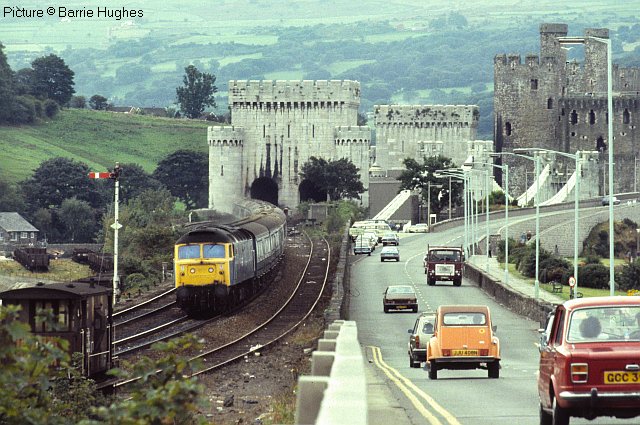
This view from the Llandudno Junction flyover shows an unidentified class 47 coming into The Junction on an Up boat train made up of Mk IId air-conditioned coaches. The white limestone of the bridge contrasts with the grey stone of the castle. The Telford suspension bridge, which carried the A55 until 1958, is visible; it is now maintained by the National Trust. The quay siding is occupied by stored wagons but the quay itself had not been used for shipping for a long time. More recently the quay siding is out of use.
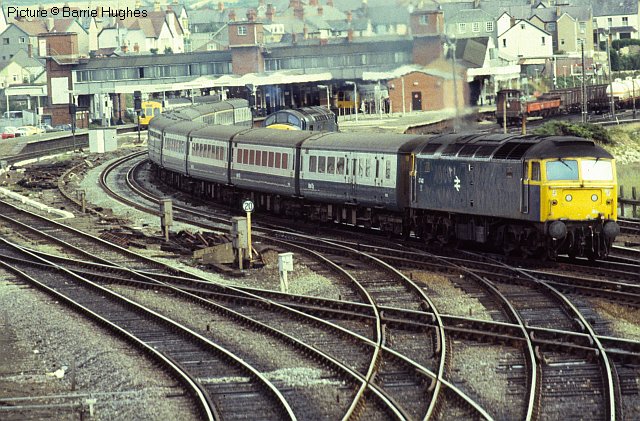
47 442 departs Llandudno Junction for Holyhead on a MkIId air-conditioned rake as seen from the flyover. A Class 40 is stabled in the yard and a white refurbished livery Class 101 DMU in the bay platform. The Amlwch Chlorine tankers are still in the yard and an Up DMU stands in the station, possibly a Blaenau service. 47 442 was withdrawn on 12 March 1993 and cut up at Crewe Works 4 years later in April 1997.
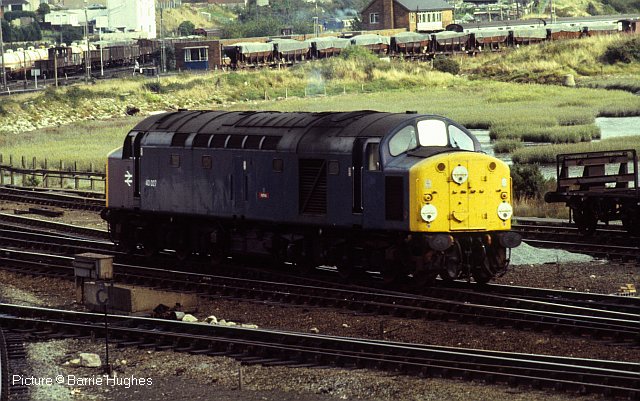
Parthia shunts off the Llandudno Junction depot with the yard full of sulphur wagons on the original Conwy Valley trackbed. The chlorine tanks are still recessed as well as MkI coaches in the carriage sidings. The exhaust of an Up DMU can be seen departing the station.
A Visit to Waverton - with Jim Ikin
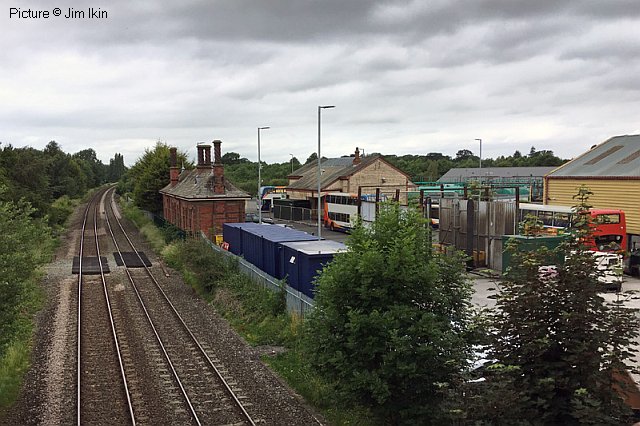
Four images of what remains Waverton Station on the Chester to Crewe line (although when open it was mainly served by Chester - Whitchurch locals using the line which branched off at Tattelhall Junction. Looking toward Chester from the bridge showing the 1897-built second station – the first opened in 1840 on the other side of the road bridge and was called Black Dog after a public house on the A41 (still going strong).
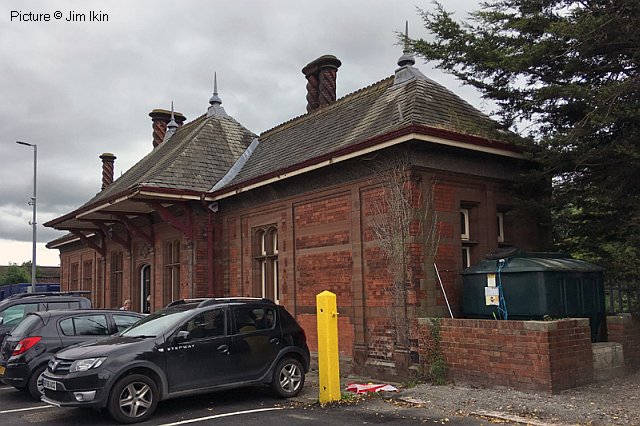
Images 2-4 are by kind permission of Stagecoach Chester who now occupy the site. The second station was built by the First Duke of Westminster to impress important guests visiing his Cheshire home at Eaton Hall, well-known in railway circkes for its 15-inch gauge railway built by Sr Arthur Heywood to connect the Hall with the goods yard at Balderton station on the Chester - Shrewsbury line.
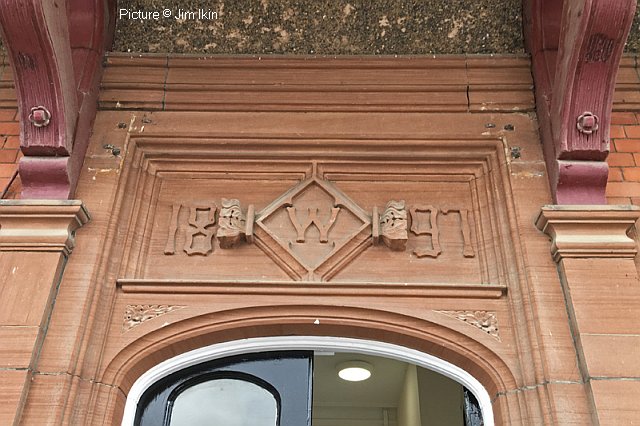
It originally boasted large canopies on both platforms – see the photograph on the disused stations website.
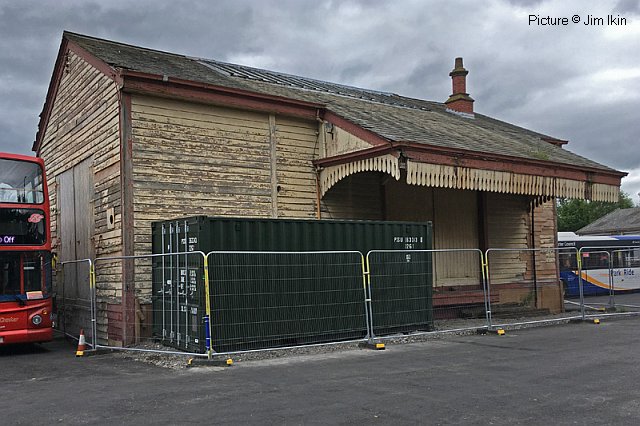
The out-of-use wooden goods shed. Both buildings have Grade II listed status: the goods shed is described in the listing as 'An unusually well preserved and rare example of a local goods shed,
formerly widespread'.
Tim Rogers' view
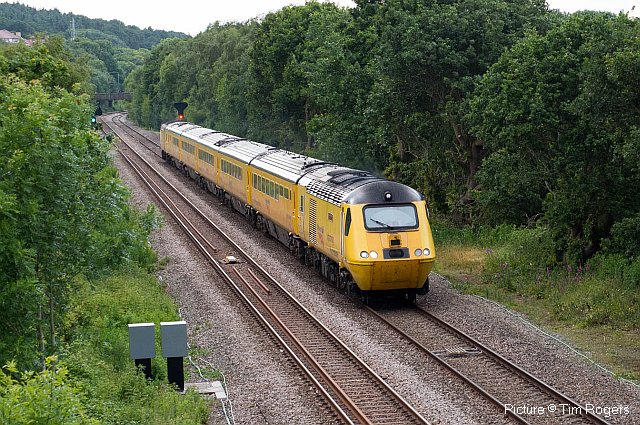
Mostyn, 14 June: The New Measurement Train formed of 43 062 John Armitt, Network Rail High Speed Track Recording Train coach Mk3, 975984. (Formerly Laboratory 15 "Argus" and later Test Car 4.), Mk3 coaches, 977994, 977993, 975814 (Formerly Test Car 10), 977984, 43 013. 1Q30 10:53 Derby R.T.C.(Network Rail) to Crewe C.S. (L&NWR Site) via Chester, Holyhead & Liverpool.
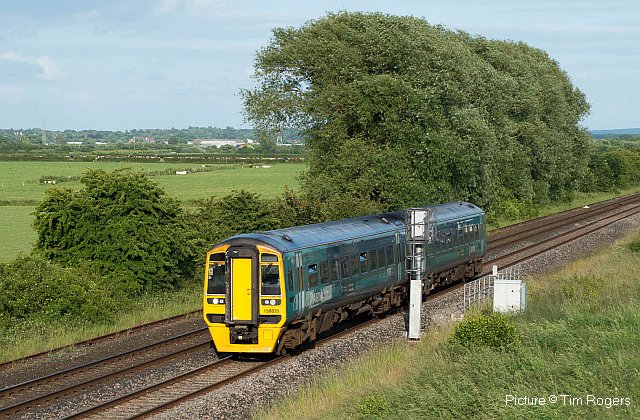
Sandycroft, 14 June: 158 835 on the 1D16 17:09 Birmingham International to Llandudno.
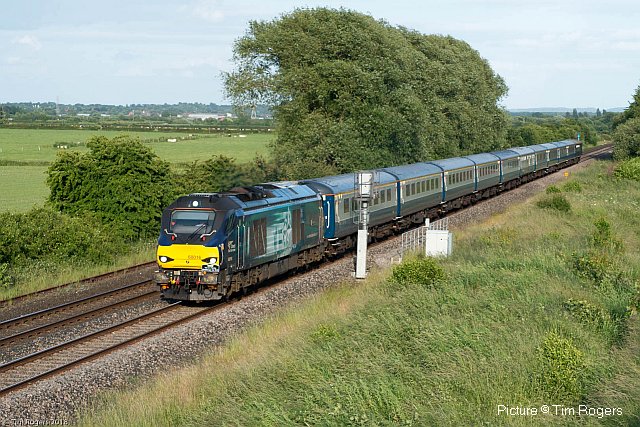
Three Peaks Challenge special 1Z51 19:12 Crewe to Bangor (Gwynedd). 68016 Fearless.
Mk2f FO, M3333, M3314, W3386, W3397, Mk2f RFO M1200, Mk1 RBR, M1657, Mk2 FO W3364, W3304, M3356, M3345, Mk2b BFK generator van.
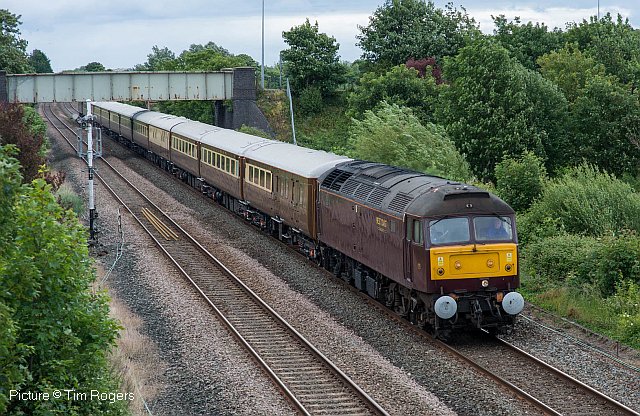
16 June at Prestatyn: Statesman Rail 1Z46 05:44 Stevenage to Blaenau Ffestiniog. 47 826,
Mk2d BSO 9479, Mk2e FO 3231 BEN CRUACHAN, Mk2e FO 3229 SNOWDON, Mk1 RK 80043, MK2f FO 3438 BEN LOMOND, MK2f FO 3312 HELVELLYN, Mk2f RFO 1211 SNAEFELL, MK2f FO 3348 INGLEBOROUGH, MK2f FO 3344 SCAFELL, MK2f FO 3384 PEN-Y-GHENT, Mk2f FO 5912, 47 832.
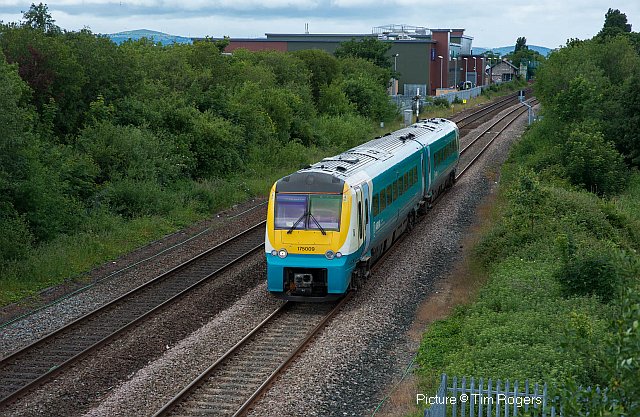
175 009 on 1H86 10:44 Llandudno to Manchester Airport passes Prestatyn with old and new signals in view.
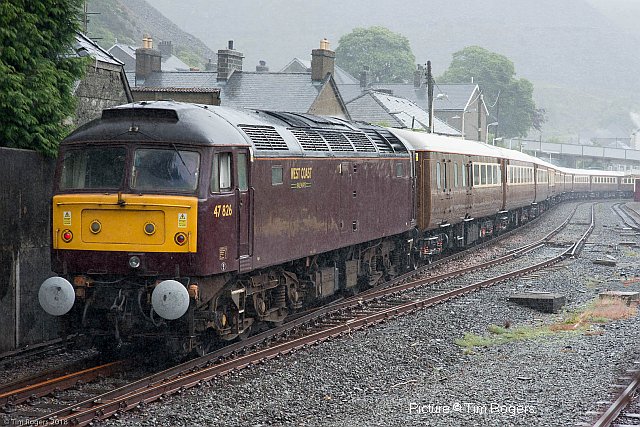
Blaenau Ffestiniog lives up to its weather reputation as the excursion arrives.
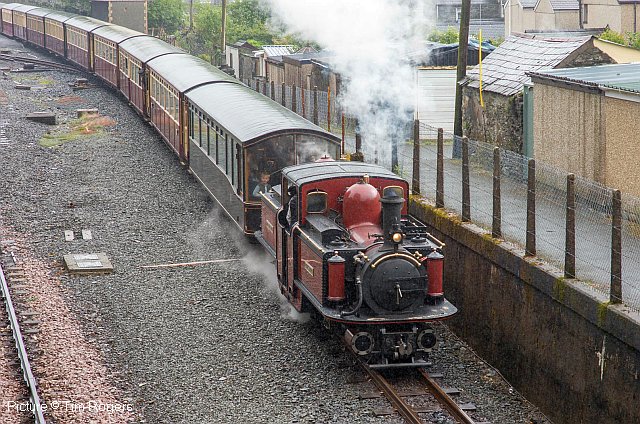
Double Fairlie 0-4-4-0 David Lloyd George departs from Blaenau Ffestiniog with the 13:40 to Porthmadog.
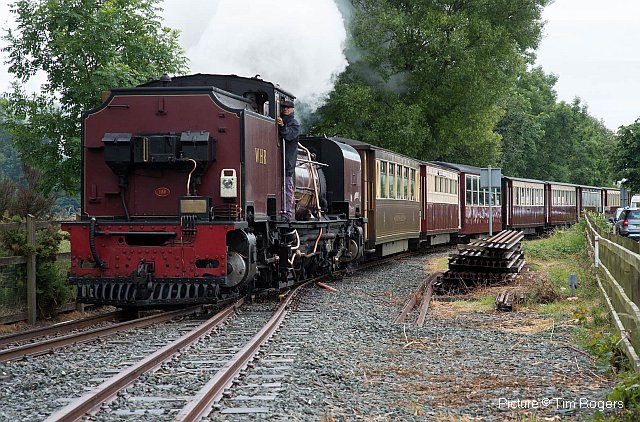
Welsh Highland Railway Beyer Garratt 138 departs from Porthmadog with the 14:15 to Caernarfon.
Narrow Gauge scenes - by Martin Evans
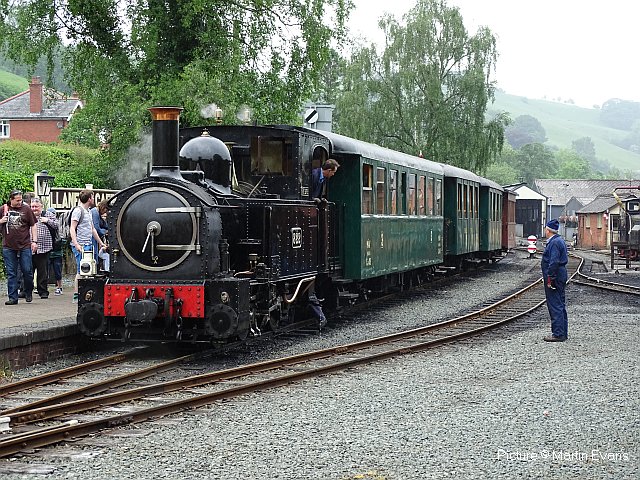
I visited the Welshpool and Llanfair Railway on 31 May and found one of the two original locomotives, No. 1 The Earl in traffic, seen above on arrival at Llafair Cereinion. (the second loco is no 2 the Countess). They were built by Beyer Peacock & Co. Ltd. at their Gorton Foundry, Manchester in 1902 to a compact and sturdy design capable of handling the trains on this steeply graded railway.
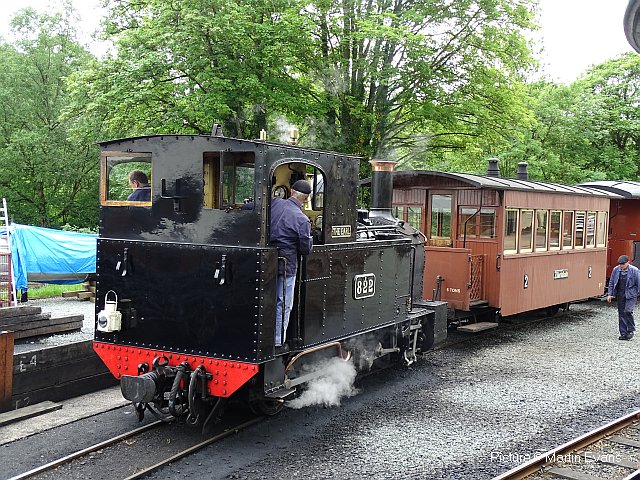
The Earl shunts at Llanfair Caereinion as it prepares to strengthen the 1pm return service to Welshpool. The pair coped with all the traffic on the line from its opening in 1903 to closure in 1956. Under the GWR and BR, they ran as Nos. 822 and 823. From time to time they went for overhaul at Oswestry Works and were sent there on closure, returning to Llanfair Caereinion in the 1960s to commence work for the Preservation Company.
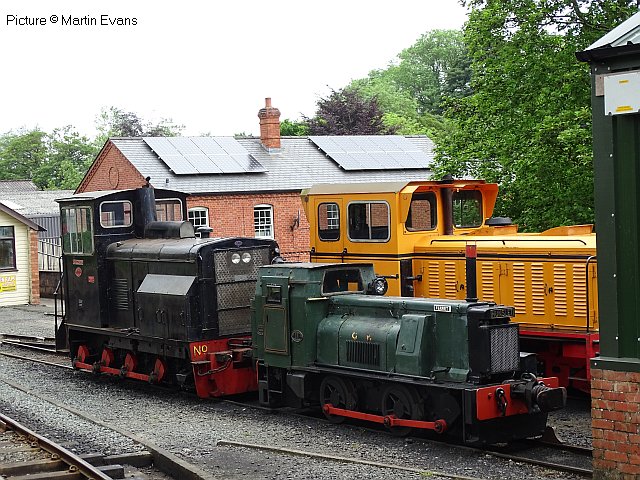
A view of the shed at Llanfair Caereinion found the following diesels at rest-
No 11 Ferret (front right) The working life of No. 11 was spent in Wiltshire at an Admiralty armament depot. It was built in 1940 by the Hunslet Engine Co. Ltd, Leeds, and is typical of this firm's early mines diesels being of low overall height (6ft 4ins) and originally built as a flameproof machine. This four-coupled locomotive has a 50 h.p. Gardner diesel engine and despite its diminutive appearance is capable of shunting heavy trains.
No 17 Diema (behind), This 230 h.p. locomotive was one of a batch of 91 built at the Diephulzer Works near Bremen, Germany, in 1979 for the Taiwan Sugar Corporation. It carries the Diema trade name and was delivered new to the sugar factory at Sanhua in Tai-nan County, some 300 km south of the capital Taipei. Here it would have been a common sight in the area working 600 tonne trains of raw sugar cane from the fields to the factory for processing. With the import of cheaper cane from Indonesia and consequent cut-backs, the opportunity to obtain one of these powerful locomotives was taken and ours, Taiwan Sugar Corporation No. 175, arrived at Llanfair on 19 April 2004.
No 7 Chattenden (front left). This six-coupled machine was built by E. E. Baguley at Burton-on-Trent in 1949 to the order of the Drewry Car Company and is now fitted with a Gardner engine developing 150 h.p. Originally it worked on the Admiralty’s Upnor and Lodge Hill Railway then later transferred to Broughton Moor, Cumbria. Capable of working passenger trains in an emergency, the locomotive is normally used for the heavier civil engineering works trains.
On 16 June I visited the Talyllyn Railway and found the following two engines in traffic:
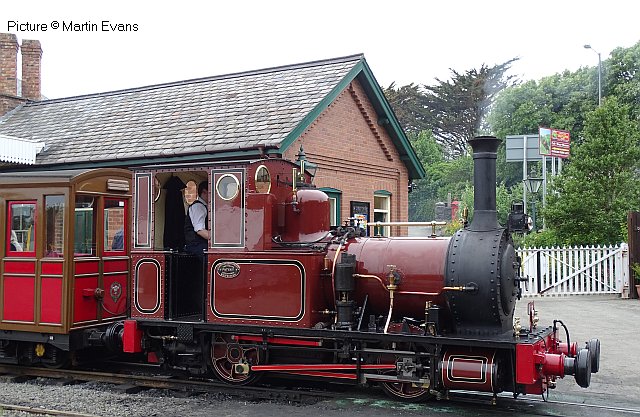
No 2 Dolgoch (above) is a narrow gauge 0-4-0 well tank steam locomotive. It was built by Fletcher, Jennings & Co. in 1866 and is one of the oldest locomotives still in active service. It was delivered to the Talyllyn Railway in 1866 and continues to run on this railway; when the preservationists took over it was the only working loco.
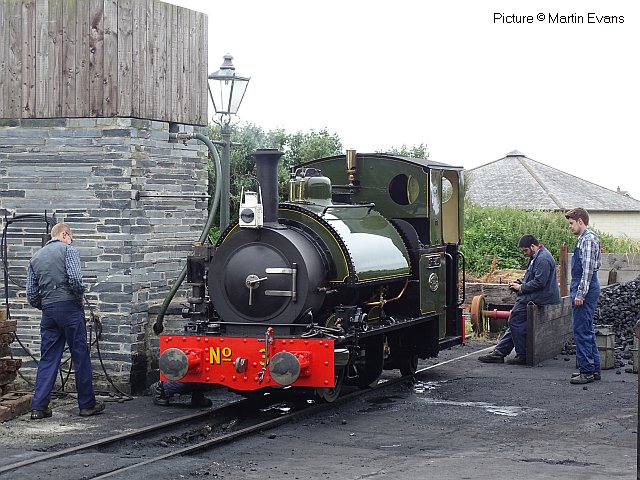
Sir Haydn was built by Hughes's Locomotive & Tramway Engine Works, Loughborough in 1878. It operated on the Corris Railwayuntil closure in 1948, and since 1951 has operated on the Talyllyn . It has carried the operating number 3 under four successive owners.
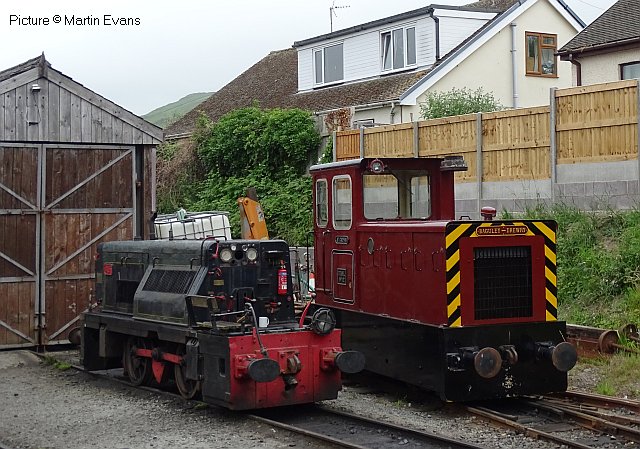
Diesels were noted on the shed at Pendre included Hunslet-built Alf (left) and St Cadfa, a Baguley
-Drewry loco.
North Wales Coast home page | Archive | Previous Notice Board